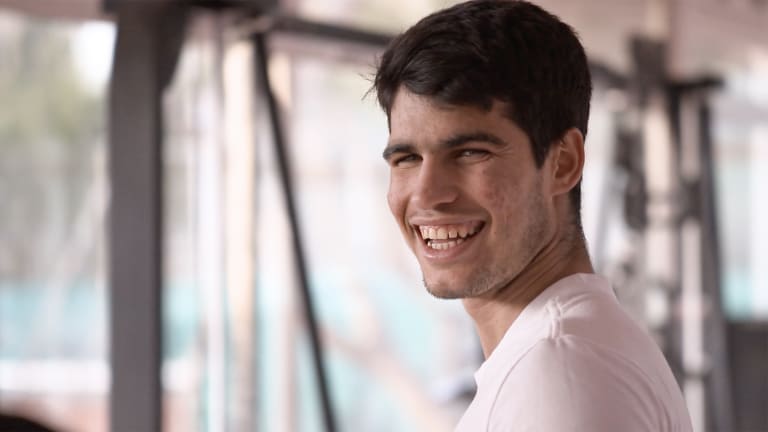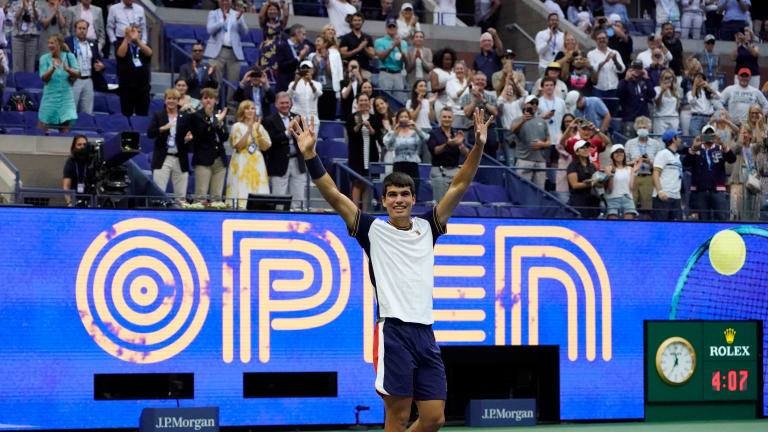Tennis.com Interview
Carlos Alcaraz: No longer an outsider looking in
By Jan 17, 2022Tennis.com Interview
Never judge, just love: Jessica Pegula and her dogs have been a winning pair
By Apr 24, 2025Tennis.com Interview
It's the most wide open clay season on the ATP Tour in 20 years—and the players are here for it
By Apr 24, 2025Tennis.com Interview
A year into retirement, Garbiñe Muguruza reconnects: “Tennis wants me back!”
By Apr 22, 2025Tennis.com Interview
Aryna Sabalenka on Marg-Arynas, team TikToks—and her quest for that elusive Porsche
By Apr 19, 2025Tennis.com Interview
Jan-Lennard Struff sees Munich title defense bid as 'perfect opportunity' to turn 2025 around
By Apr 14, 2025Tennis.com Interview
Lorenzo Musetti manifested his 'special' week in Monte Carlo with first Masters 1000 final
By Apr 12, 2025Tennis.com Interview
No logic, just a feeling: Andrey Rublev "always knew" he wanted to work with Marat Safin
By Apr 07, 2025Tennis.com Interview
Brad Gilbert, Patrick McEnroe weigh in on U.S. men's tennis evolution
By Apr 05, 2025Tennis.com Interview
Patrick McEnroe decries Jannik Sinner suspension, tags Joao Fonseca as future star
By Apr 04, 2025Carlos Alcaraz: No longer an outsider looking in
The 18-year-old comes into 2022 on the back of a breakthrough season, and began his next chapter Monday at the Australian Open—with a straight-set win.
Published Jan 17, 2022
Advertising
Advertising

Alcaraz went 32-17 in 2021, the youngest ATP player to record that many season wins in 29 years.
© Tennis Channel
Advertising

"I’m really happy to know that the people around the world are following you, supporting you. I think that I have a game that the people want to see on the court. So I’m really happy to progress with the fans and everything," he says.
© AFP via Getty Images